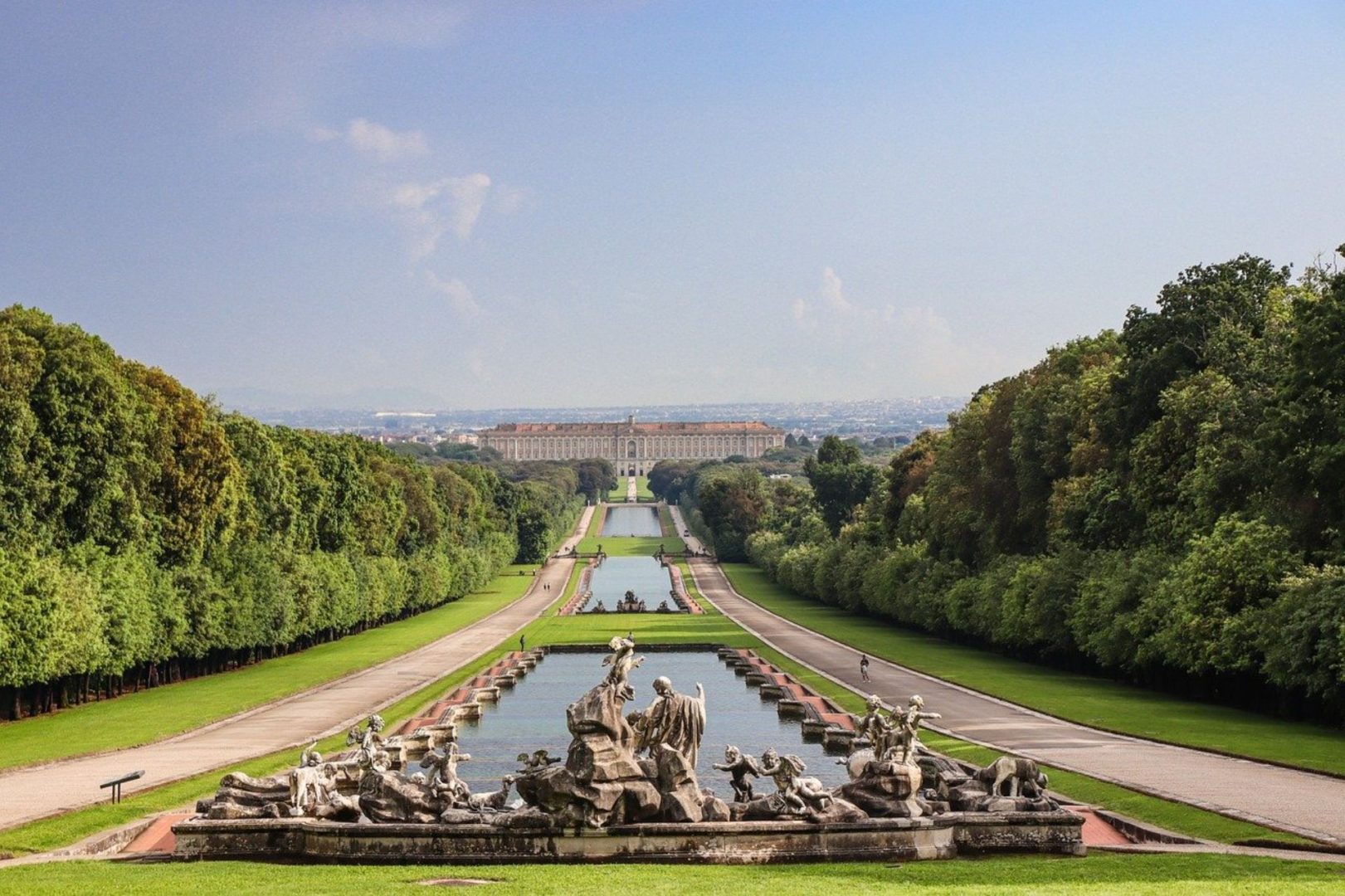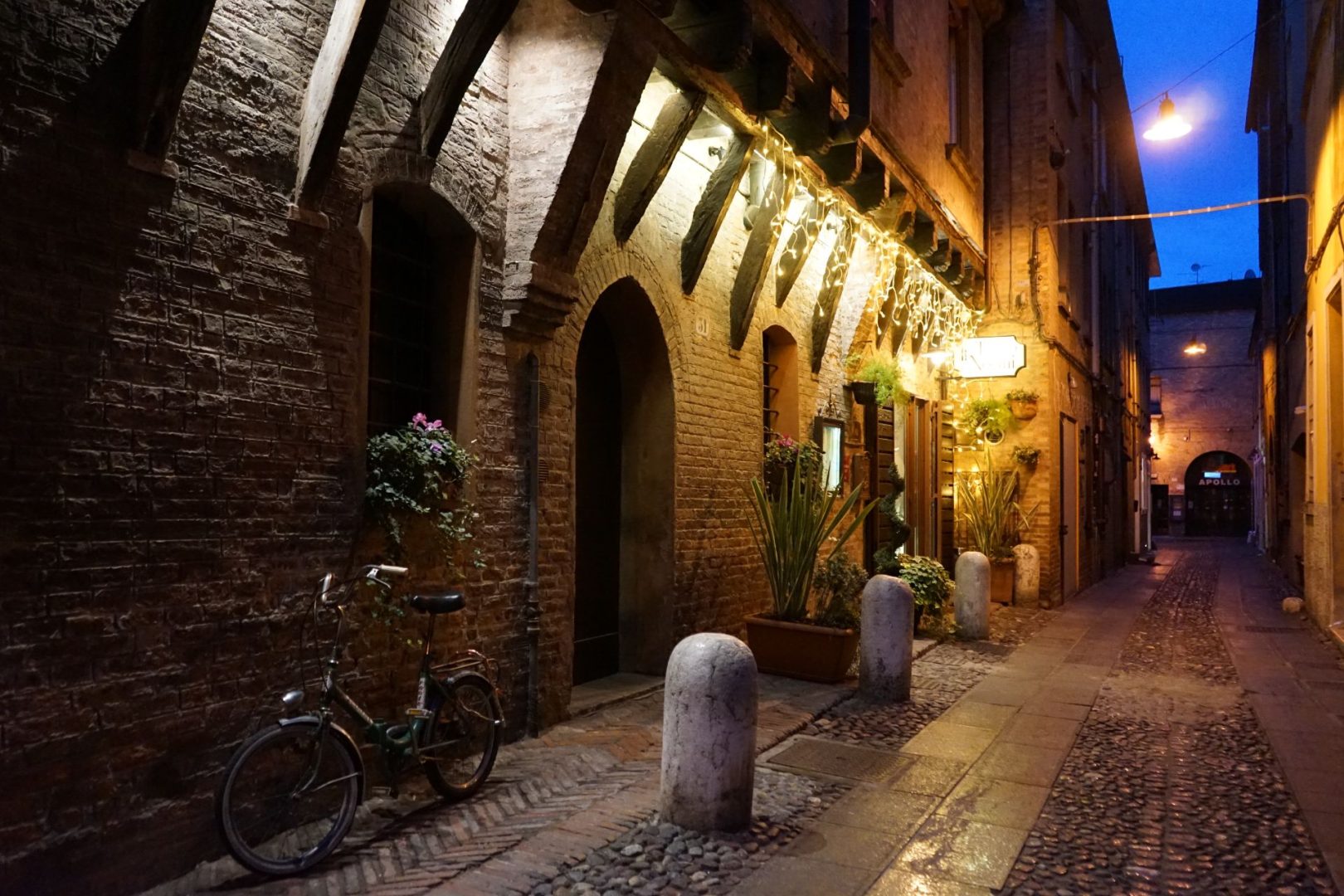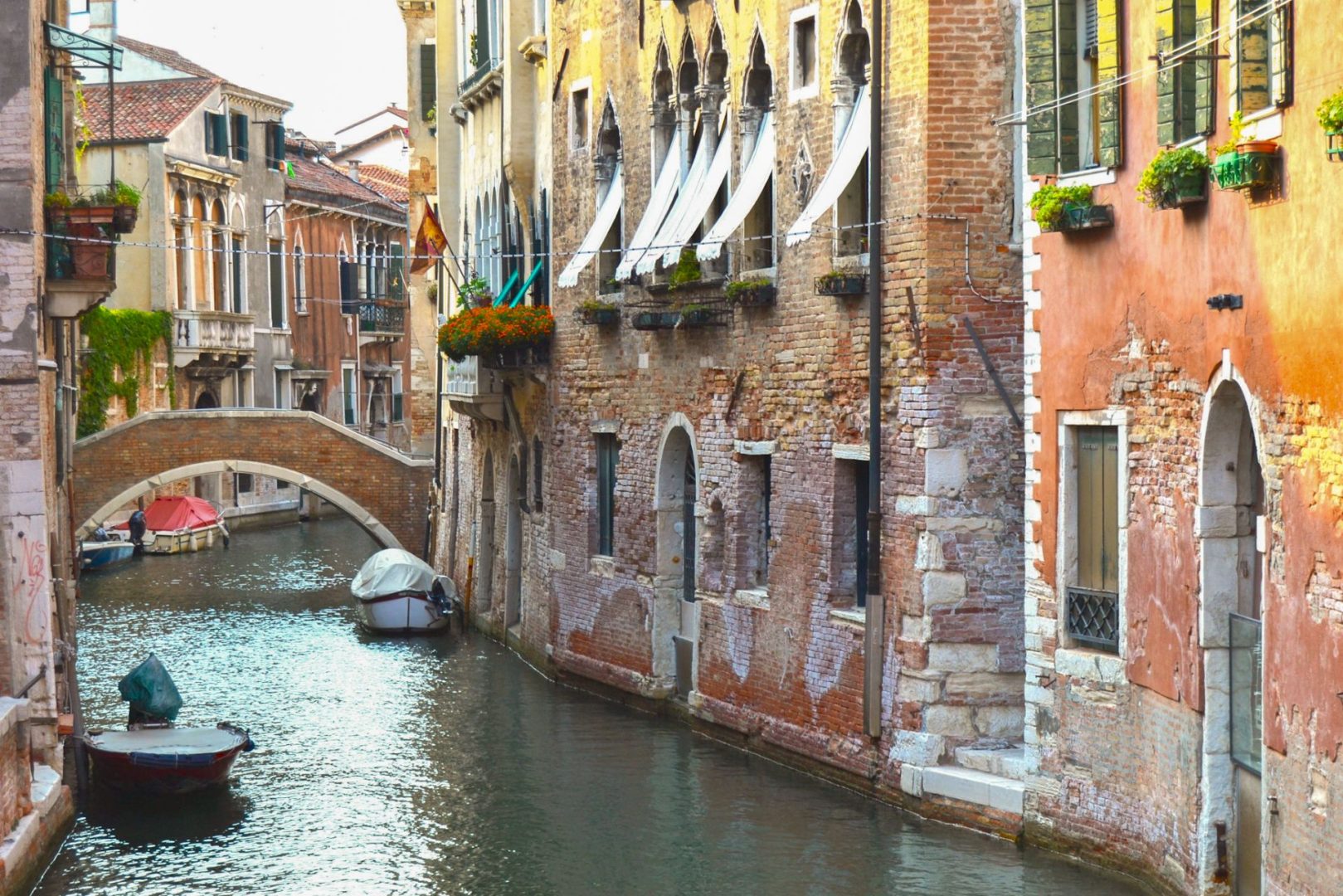There’s no doubt that the royal palace is what made Caserta famous internationally. Yet, too often, it’s all you read about the town in guidebooks and tourist itineraries.
The truth is, there are some historical landmarks sprinkled around the town that hide fascinating stories and are well worth visiting. For example, did you know that the flags f the White House and Buckingham Palace come from the silk factories of Caserta? Or that the town’s historic heart is a medieval gem that sits on a hill?
Below I’m sharing all the beautiful things to see in Caserta. Whether you opt for a quick day trip from Naples or decide to stay a couple of days, get ready for some great exploration!
As usual, at the bottom of the page you’ll also find a handy map featuring all the places I mention in this article to guide your adventure.
The Royal Palace of Caserta

Ok, so the Royal Palace is literally the first thing you see as soon as you step out of the train station.
What sets this architectural marvel apart is its sheer size, boasting an impressive 1,200 rooms spread over more than 44,000 square meters, surrounded by vast gardens sprawling over 120 hectares. As you can guess, it’s one of the biggest residencies in the world.
Beyond its physical magnitude, the Royal Palace is also a magnificent symbol of Baroque architecture and royal power, revealing a lot about Italian history.
In the 18th century, King Charles III of Bourbon hired architecture superstar Luigi Vanvitelli with the idea of creating something that could rival Europe’s most famous royal residences, including Versailles.
The construction spanned over half a century, with staggering costs exceeding 6 million ducats, equivalent to over 300 billion euros today, and resulted in what is now considered one of Italy’s top landmarks.
Exploring this magnificent complex is a day-long adventure, unraveling the secrets within the historic apartments, strolling through the expansive park, and marveling at the English gardens with their fascinating Bagno di Venere.
King Charles, an enlightened ruler, spearheaded various initiatives that transformed Naples into a pivotal stop on the Grand Tour. His cultural contributions included the construction of the San Carlo Theatre, the world’s first opera house, and the initiation of excavations in Pompeii and Herculaneum. Following the construction of the Caserta palace, the town witnessed a remarkable period of valorization, giving rise to innovative projects that you can still explore today.
>>> Info and tickets: Royal Palace of Caserta official website
The royal silk factory at San Lucio

Located on the hills about 4km from the train station, to me San Leucio is one of the most fascinating things to see in Caserta.
This site bears witness to the visionary endeavors of Ferdinand IV, the son of Charles III. Transforming a royal hunting lodge into a thriving silk factory, Ferdinand pursued the ambitious dream of establishing an autonomous industrial village – the utopian “Ferdinandopoli” – inspired by enlightened socialism.
In his quest, he summoned the finest Italian and French weavers to teach the art of weaving to the locals. The workers at the royal factory were given a house in the village and experienced groundbreaking ideals of gender equality, meritocracy, public education, and healthcare – something incredibly modern for the time.
The Borgo San Leucio factory covered the entire silk production chain, from silkworm breeding to the creation of the finished fabric. Its exquisite silks became famous across Europe, attracting orders from all the major courts of the time.
Though Ferdinand’s utopian dream eventually faded, the tradition of silk-making endures in the region, kept alive by local artisans. And guess what? Clients include Buckingham Palace and the White House!
The entry ticket includes a fascinating guided tour that unveils the inner workings of the silk manufacturing facilities, as well as the royal residence – be sure to see the private bathroom of Ferdinand’s wide, Maria Carolina – it’s pretty impressive!
While exploring the site, you can also see the perfectly preserved houses where the silk factory workers once resided (still inhabited today), plus a beautiful belvedere.
>>> Info and tickets: Real Borgo San Leucio official website
The Caroline Aqueduct
As you can imagine, the grandeur of the royal silk factory and the lush gardens of the Caserta palace demanded copious amounts of water every day. And guess what? The Bourbons, being the visionaries they were, found the perfect solution.
Once again the hero is Mr. Vanvitelli (I told you he was a superstar). He orchestrated the construction of a colossal 40 km-long aqueduct to channel water from the slopes of Mount Taburno in the province of Benevento straight to the heart of Caserta.
This aqueduct, a nod to the engineering prowess of ancient Rome, took a whopping 16 years to complete. As soon as it was unveiled, it was acclaimed as a masterpiece of hydraulic ingenuity. Not to mention, it was the longest bridge in Europe at the time.
A substantial portion of the aqueduct lies beneath the surface. However, you can see a section of it by driving along the SS 265 for about 8 km from Caserta Sud to Maddaloni, Valle di Maddaloni. What awaits you is a beautiful spectacle – a monumental structure with three rows of arches, soaring a staggering 60 meters high. Trust me, it’s a sight to behold!
The old hilltop village of Casertavecchia

Copyright: Vincenzo De Simone at Unsplash
Hop on one of CLP bus #103 outside the train station and go to Casertavecchia (Old Caserta), a medieval gem up in the hills, about 10 km from Caserta.
Once the thriving heart of Caserta, Casertavecchia’s prominence waned when the Royal Palace was erected, prompting locals to migrate to the plains below where the modern city developed. Today, Casertavecchia is a tranquil escape with panoramic views and enchanting cobblestone alleys filled with artisan shops and traditional eateries.
In the heart of the village, the Cathedral of St. Michael the Archangel graces the central square with its elegant tuff construction. Legend has it that it was the fairies of the Tifatini Mountains to bring the columns of the church all the way up here.
Perched on the highest point of Casertavecchia, you can see the remains of a castle dating from 861. Over the centuries, it served as the residence for various dynasties, from the Swabians to the Aragonese, and is rumored to be haunted by the ghostly presence of Countess Siffridina.
For those visiting in September, the village comes alive with the “Settembre al Borgo” festival, featuring concerts, performances, and exhibitions.
Other things to see in Caserta beyond the Royal Palace
If stars and constellations are your thing, then check out the Planetarium of Caserta. It’s one of Italy’s few fully-digital planetariums, promising captivating shows accompanied by live narration that will transport you to the wonders of the universe.
In a school adjacent to the planetarium, the Michelangelo Museum displays objects and models related to science and technology.
Lastly, Caserta boasts a war cemetery dedicated to the brave souls who fell during World War II. You may not know this, but Caserta played a pivotal role in wartime, hosting a military hospital, while the Royal Palace served as the headquarters for British and American troops. Notably, it was at this very location that the surrender of German forces in Italy was officially signed.
How to travel from Naples to Caserta
There are frequent trains departing connecting Naples central station to Caserta, completing the journey in just 40 minutes (about €4 one way). For up-to-date schedules and fare information, visit the Trenitalia website.
If you are traveling to Caserta by car, consider using the Parcheggio Giordano parking facilities just a quick stroll from the Royal Palace (1.50€/h or 10€ for the day). It also offers a convenient bike rental service.








Your descriptions of the lesser-known gems, such as the charming town center and the intriguing local markets, paint a vivid picture of the authentic Italian experience. It’s evident that you’ve immersed yourself in the culture and history of Caserta, and your passion shines through your writing. Your practical tips and recommendations for exploring beyond the Royal Palace provide valuable insights for travelers seeking a more in-depth adventure. Your article serves as a valuable resource for anyone looking to uncover the soul of Caserta. Thank you for sharing your discoveries and allowing us to glimpse the heart and soul of this remarkable Italian destination. Your enthusiasm for travel and exploration is truly inspiring, and your words transport us to the streets and corners of Caserta.
Thank you so much for your kind words, much appreciated!🙏